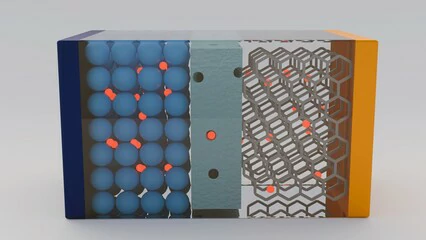Global Lead Ban Impact On Lead-Acid Motorcycle Battery Replacement
main content
The motorcycle industry faces a pivotal transformation as global lead bans accelerate the phase-out of traditional lead-acid starter batteries. With over 50 countries implementing strict lead usage regulations since 2020, lithium iron phosphate (LFP) batteries are emerging as the primary replacement, driven by environmental mandates and advancing energy technologies. This shift not only reflects regulatory compliance but also signals a broader realignment toward sustainable power solutions in the transportation sector.
Policy Landscape and Market Disruption
Lead-acid batteries, historically favored for their low production costs, now confront 30–45% annual sales declines in regulated markets like the EU and North America. The European Union’s End-of-Life Vehicles Directive, mandating 95% lead recycling rates, has raised manufacturing costs by 15 – 15–25 per unit, eroding lead-acid’s price advantage. Simultaneously, China’s National Sword Policy restricts lead imports, pushing manufacturers toward lithium alternatives. These policies have catalyzed a 22% annual growth in LFP motorcycle battery production since 2022, with projections indicating 70% market penetration by 2035.
Technological Substitution Challenges
While lithium batteries offer 3x higher energy density and 50% lighter weight, their adoption faces hurdles. Lead-acid systems still dominate in extreme-temperature regions due to lithium’s 15–20% performance drop below -10°C. However, innovations like low-temperature electrolyte formulations and self-heating LFP cells are narrowing this gap. For example, recent LFP variants now operate efficiently at -20°C, matching lead-acid’s cold-cranking amps (CCA) while reducing weight by 4.5 kg per battery.
Regional Compliance Strategies
Asia-Pacific markets, responsible for 65% of global motorcycle sales, exhibit divergent responses. India and Southeast Asia retain lead-acid dominance through localized exemptions, whereas Japan and South Korea enforce 100% lead-free battery mandates for new motorcycles by 2027. In Africa, hybrid solutions like lead-carbon batteries temporarily bypass restrictions but face obsolescence as lithium prices drop below $150/kWh. Europe’s Carbon Border Adjustment Mechanism further pressures exporters to adopt lithium alternatives or face 5–8% tariff penalties.
Consumer Adoption Barriers
Price sensitivity remains critical in emerging economies, where lead-acid batteries cost 80–120 versus LFP’s 250–400. To bridge this gap, governments in Brazil and Indonesia offer 50–75 subsidies for lithium-powered motorcycles. Educational campaigns highlighting lithium’s 8-year lifespan (vs. lead-acid’s 2–3 years) and 30% fuel efficiency gains in start-stop systems are gradually shifting consumer preferences.
Future Outlook and Industry Adaptation
By 2030, 90% of new electric motorcycles are expected to use LFP batteries, while lead-acid demand will concentrate on aftermarket replacements. Automotive giants like Honda and Harley-Davidson are investing in modular lithium swap networks to ease transition costs. Emerging regulations targeting cobalt and nickel in lithium alternatives may further disrupt supply chains, prompting R&D into sodium-ion and solid-state alternatives.
Conclusion
The global lead ban has irrevocably altered the motorcycle battery landscape, positioning lithium as the unavoidable successor. Manufacturers must prioritize partnerships with lithium suppliers and invest in cold-climate performance enhancements to secure market share. For consumers, lithium’s total cost of ownership now rivals lead-acid in mid-tier models, signaling a paradigm shift toward cleaner, regulation-proof energy storage.

START-STOP LITHIUM battery
Enov start-stop battery is designed to provide excellent performance for high-demand start-stop vaehicles. It adopts the third-generation intelligent lithium platform architecture to achieve technological breakthroughs in core indicators such as cycle life, environmental adaptability and energy density. Compared with the traditional lead-acid battery system, the energy efficiency is increased by 210%, the cycle life is extended by 8-10 times, and the monthly self-discharge rate is controlled within 3%. Enov's unique low-temperature battery technology makes a breakthrough in achieving stable output in the whole climate domain from -30℃ to 65℃, maintaining more than 90% of the effective capacity release under extremely cold conditions (-30℃), and maintaining 90% of the capacity in high temperature environments (65℃).
The start-stop battery series products cover the mainstream voltage platform of 12V/24V/48V, and support flexible configuration of LFP (lithium iron phosphate) and NCM (lithium nickel cobalt manganese oxide) dual-material system. All models adopt modular design to support customization of different model specifications. Enuo engineering and technical team to provide full cycle technical service support, if you need, please contact us.
Other products
UAV BATTERY
LITHIUM ENERGY STORAGE BATTERY
QUICK INQUIRY
FAQ
Access to high frequency technical questions with one click, get accurate answers on product application, after-sales policy and customization process.
Service and Support
Get the latest product specifications, explore professional OEM/ODM customization services, click to open exclusive technical support and production solutions.
Become a Partner
We sincerely invite resources to interconnect, work together for win-win development, and immediately open a new chapter of strategic cooperation!



